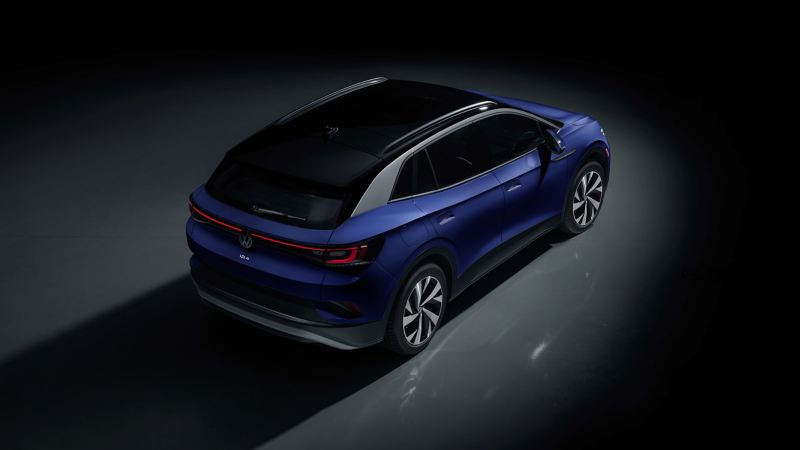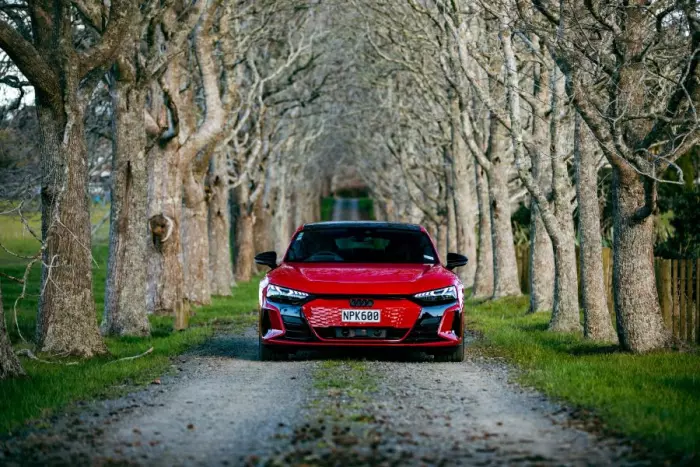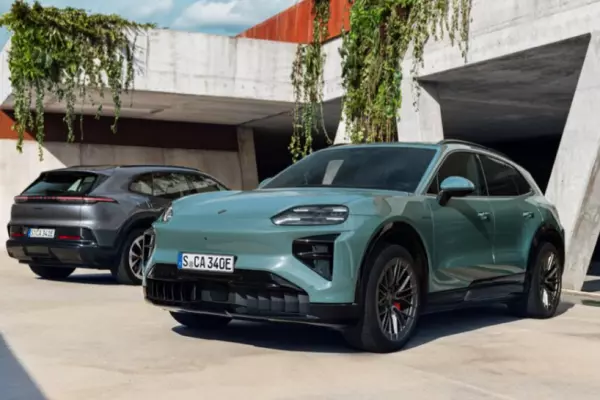I can no longer justify writing about vehicles that are powered purely by petrol.
Castigate me for my wokeness if you must, but I’m moving from petrol head to petrol dead.
Within the luxury segment, and many other vehicle categories, it is now possible to buy electric vehicles without suffering range anxiety or significant additional damage to your finances.
For this reason, BusinessDesk will no longer review the sort of cars I have always loved – big-engine, torquey, dinosaur-fuelled speedsters. It is just not worth killing the planet for them.
Last week, I wrote about the new Corvette Stingray, knowing it was the last time I’d write about such a grunty car fuelled only by fossil remains. I loved that car and I am glad it was my last one.
As I was writing the piece, GM announced that next year, it will have an electric Corvette. For so many reasons, that car will be even better than the current version.
A few petrol-only cars will still be reviewed in BusinessDesk’s The Life section, but only when they are efficient enough to be eligible for a clean-car discount, either through electric or hydrogen power or because they are super efficient.
The potential stupidity of my decision was rammed home in the past few weeks as I excluded myself from events for the super-quick Volkswagen R range and the Maserati MC20 super car. Both of these severely tested my resolve.
But gas is gone, and electric rocks.
In the US, Ford had planned to build 40,000 units of its electric pickup truck, the F-150 Lightning. It has now upped that to 150,000.
Volkswagen’s ID.3 and ID.4 are so popular in Europe, we can’t even get stock here.
The Polestar 2 is so popular that New Zealand consumers need to wait a couple of months just to get a test drive.
The new-generation MG ZS EV, our cheapest electric vehicle at just $41k after rebate, was announced and sold 500 units. In one day.
The new plugin hybrid McLaren Artura accelerates twice as fast as the marque’s older vehicles. It will do 0-100km/h in three seconds, has a top speed of 330km/h, and uses just 4.6 litres of petrol per 100km travelled.
At the opposite end of the scale, the Honda Jazz e:HEV Luxe hybrid is just $31k after rebate and uses a miserly 2.8 litres of gas per 100km. Cripes.
Across every major traditional manufacturer, there are now great hybrid and pure-electric options that use far less fossil energy than traditional vehicles.
Even the loved/hated Ford Ranger is going electric (trust me). Ford CEO Jim Farley has all but confirmed they’re about to start making it, with industry reports saying it will be available in NZ later this year. (Can we dub it the Power Ranger?)
Farley says the firm will make about 600,000 electric vehicles next year, and two million in just four years. That’s about 50% of its current output.
The innovation of the past few years has given birth to more vehicle start-ups than seemed thinkable a decade back. You’ve heard of Tesla, but there are dozens of others, from Rivian, Aptera and Faraday Future to Aspark, Polestar and more.
We are entered (or living in) a new golden age of the motor vehicle. It is just that the motor is electric and, soon, will be hydrogen, too.
The car that really got me thinking was the awesome Audi e-tron GT. If I win Lotto, I am buying this car. A loyal reader let me know recently that he is buying the SUV e-tron, moving out of a Range Rover Sport. It is the way.
While there are still questions around lifetime energy usage, including from manufacturing to eventual disposal, this will improve over time. Even without battery recycling, the US Environmental Protection Agency says electric vehicles typically have significantly lower lifetime emissions than gas vehicles. Throw in the fact that 80% of NZ power comes from sustainable sources and the lifetime-energy argument becomes nonsense.
In manufacturing, a Tesla generates 65% more greenhouse-gas emissions than a petrol-powered Toyota RAV4. But as soon as it hits a NZ road, the tables turn. The Tesla generates nearly zero emissions, whereas the RAV4 emits greenhouse gas, and also needs its oil changed ever 10,000km.
Toyota NZ itself has a recycling programme where it collects old EV batteries and either recycles them or safely stores them for when the recycling technology catches up. It is even paying registered vehicle dismantlers $300 a unit to arrange for the batteries to be picked up for recycling.
Personally, I drive a 2016 BMW 330e. It will do about 30km on electric and then swap to petrol. Around Auckland, it is almost always on electric. When I take it to our little farm up north, I charge it off solar power and instantly turn into a virtue-signalling git.
In New Zealand, with 80% of our energy coming from sustainable sources, the EV argument makes even more sense.
So, over the next few months, expect to read about the BMW iX, Maserati Ghibli GT Hybrid, Mercedes EQS and McLaren Artura — and maybe the Honda Jazz e:HEV Luxe.
The future is electrifying.
 The VW ID.4
The VW ID.4
FAQs on EVs
Are we burning coal to fuel these cars?
A little, but compared to international norms, we are ideally placed. NZ is ranked fourth in the OECD for sustainable energy. Currently, 80% of our power comes from sustainable sources and this will rise to 90% over time, with announcements of new solar and wind farms now being more common than press releases from the Act party. Right now, systems to generate 2.8 terawatt hours of energy a year are currently under construction at Mercury’s Turitea (Manawatū) and Harapaki (Hawke’s Bay) wind farms and Contact’s Tauhara geothermal plant. The government is targeting 100% renewable by 2030.
So, if everyone bought an electric car tomorrow, we’d be OK?
No. The move away from fossil fuels will be gradual and starts mostly in the luxury segment I cover. The Climate Change Commission is modelling 90% of light cars being electric by 2050. (To me, that seems woefully unrealistic. It will be much faster.)
There is also a large amount of grid-scale solar generation on the way that will help fuel the transition.
What about children mining rare earth minerals?
There is definitely an issue with this. But companies are working on supply-chain safety programmes and the main culprit, cobalt, may not be needed for long, with both Panasonic and LG/GM moving toward cobalt-free batteries.
Cobalt is used not only in EV batteries, but also in many other modern products, such as phones. For background on “artisanal” mining, see this excellent ABC Foreign Correspondent article.
But you can’t recycle EVs
Maybe not right now, but soon. Counties Energy is already using old Leaf batteries in its network as backups, extending their life. All over NZ, people are clamouring for recycled EV batteries – which have plenty of life after being used in a vehicle – to power home solar systems.
The NZ Battery Industry Group (BIG) has done a lot of work on all-of-life stewardship for EV batteries and the Ministry for the Environment will shortly announce guidelines in this area. BIG is made up of 170 organisations involved in batteries, waste management, transport, etc.
We may never have scale to fully recycle batteries in NZ, but it will happen globally. It may mean we ship batteries to, say, the EU to be recycled.
According to Transport and Environment, advancements in battery technology and recycling will also massively reduce the amount of primary raw materials (in particular lithium, cobalt and nickel) required to make an EV battery. Technological advancements will drive down the amount of lithium required to make an EV battery by half over the next decade, while the amount of cobalt required will drop by more than three-quarters and nickel by around a fifth. By 2035, recycling will also contribute over a fifth of the lithium and nickel, and 65% of the cobalt, needed to make a new battery.
If EU battery recycling targets are eventually met, an EV will consume just 30kg of metal.
One counter argument to this question, have you seen what fossil fuels have done to the planet?















